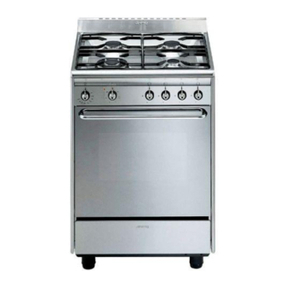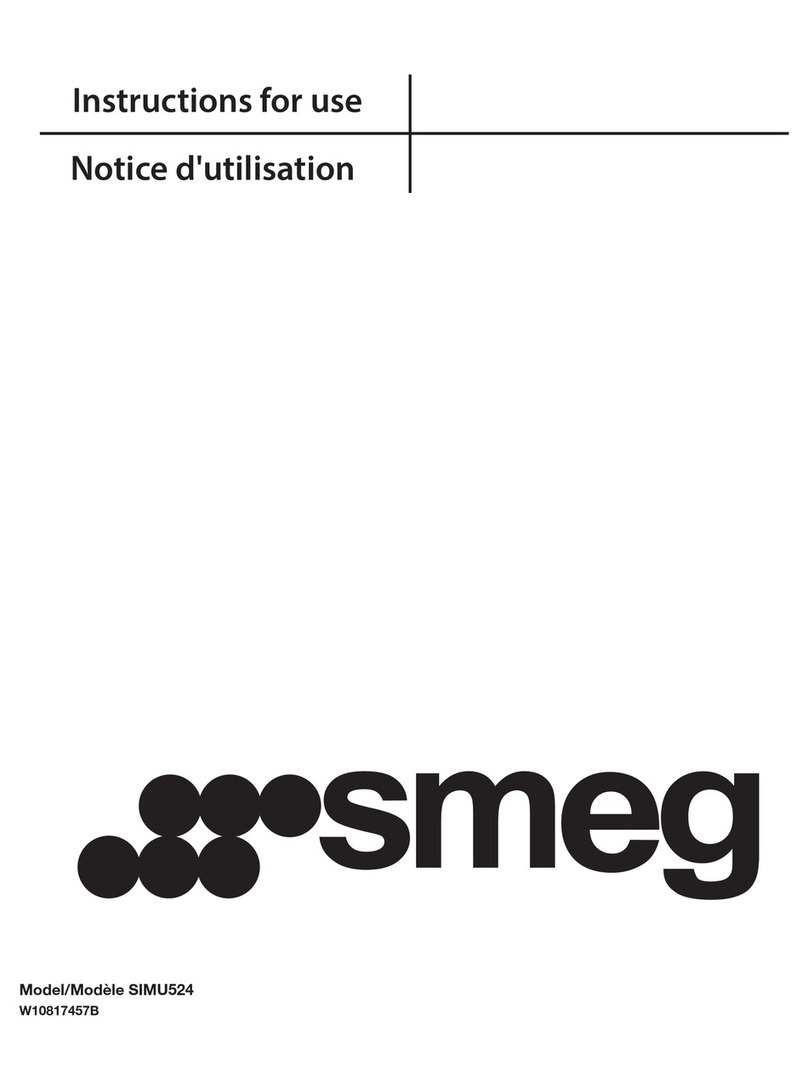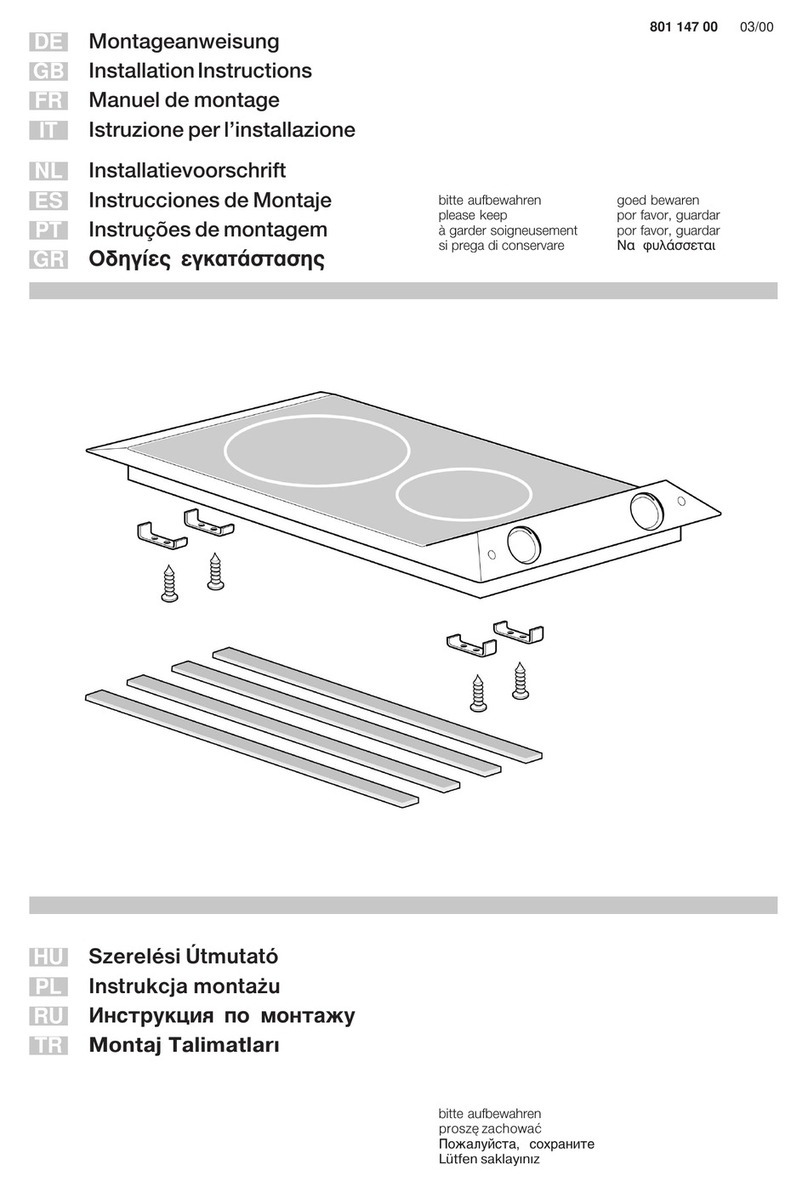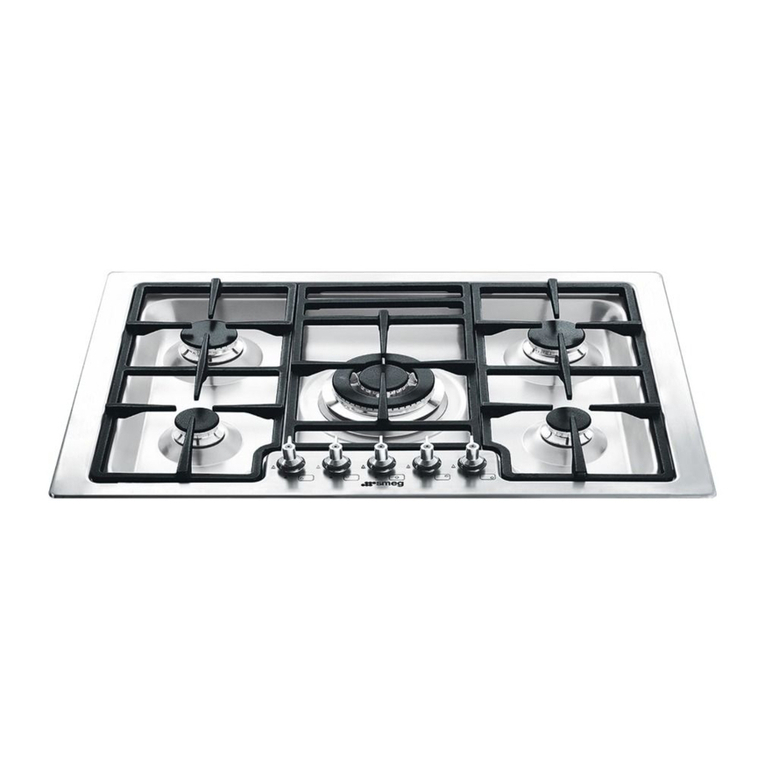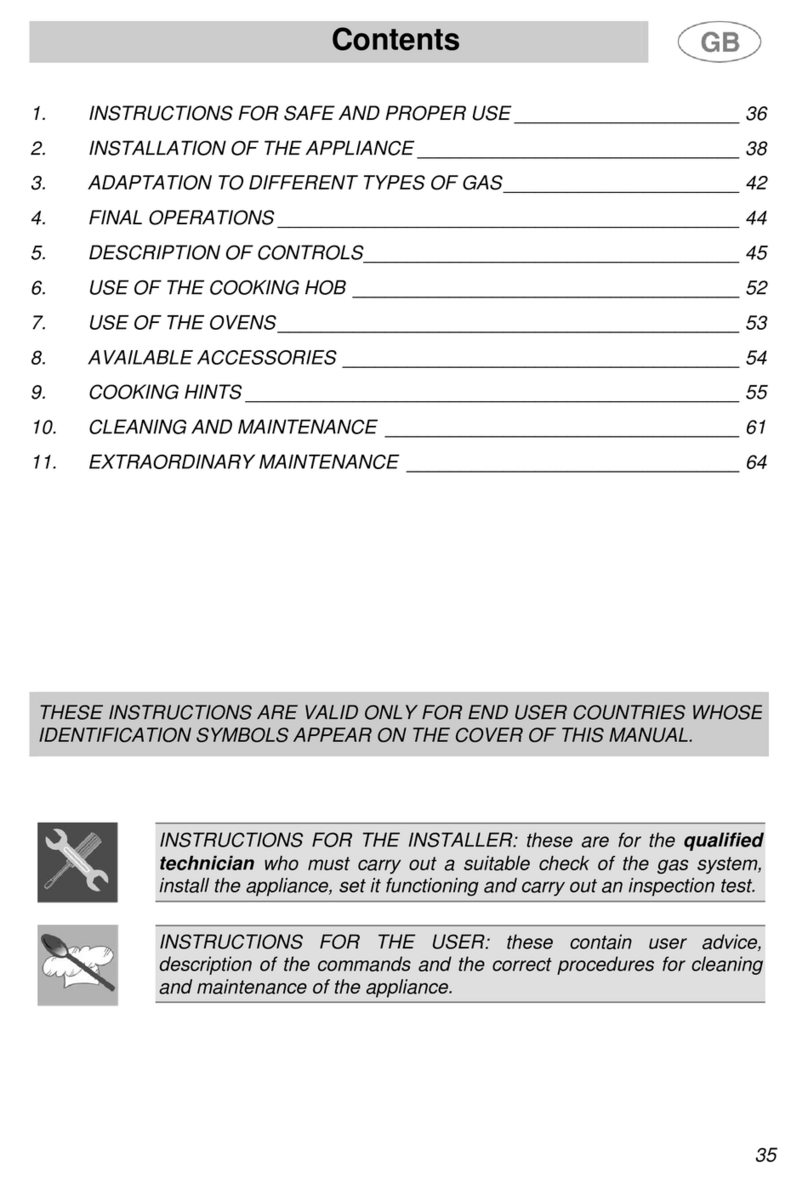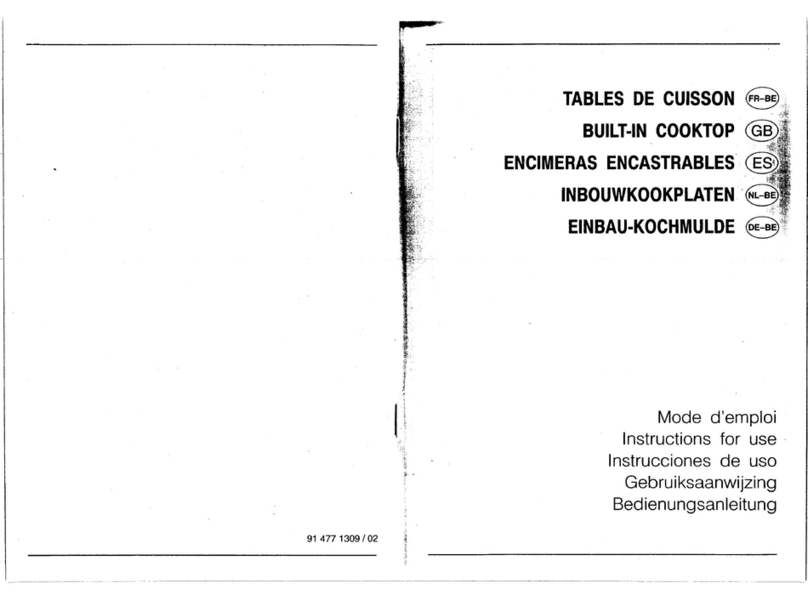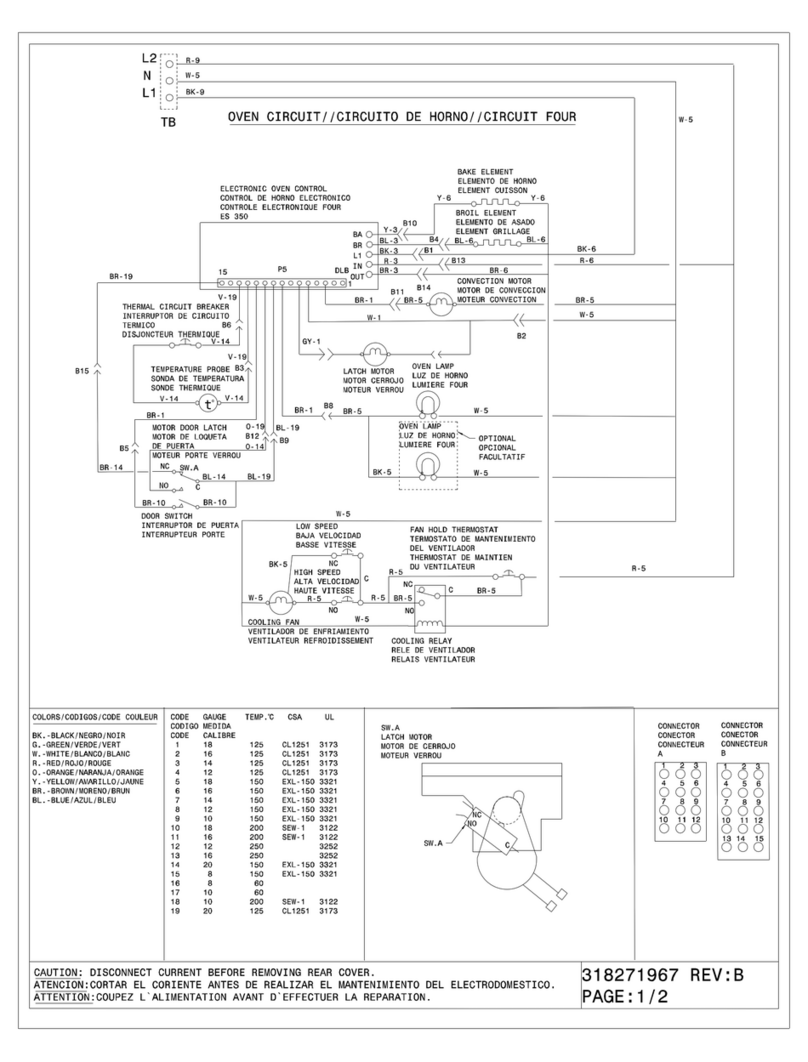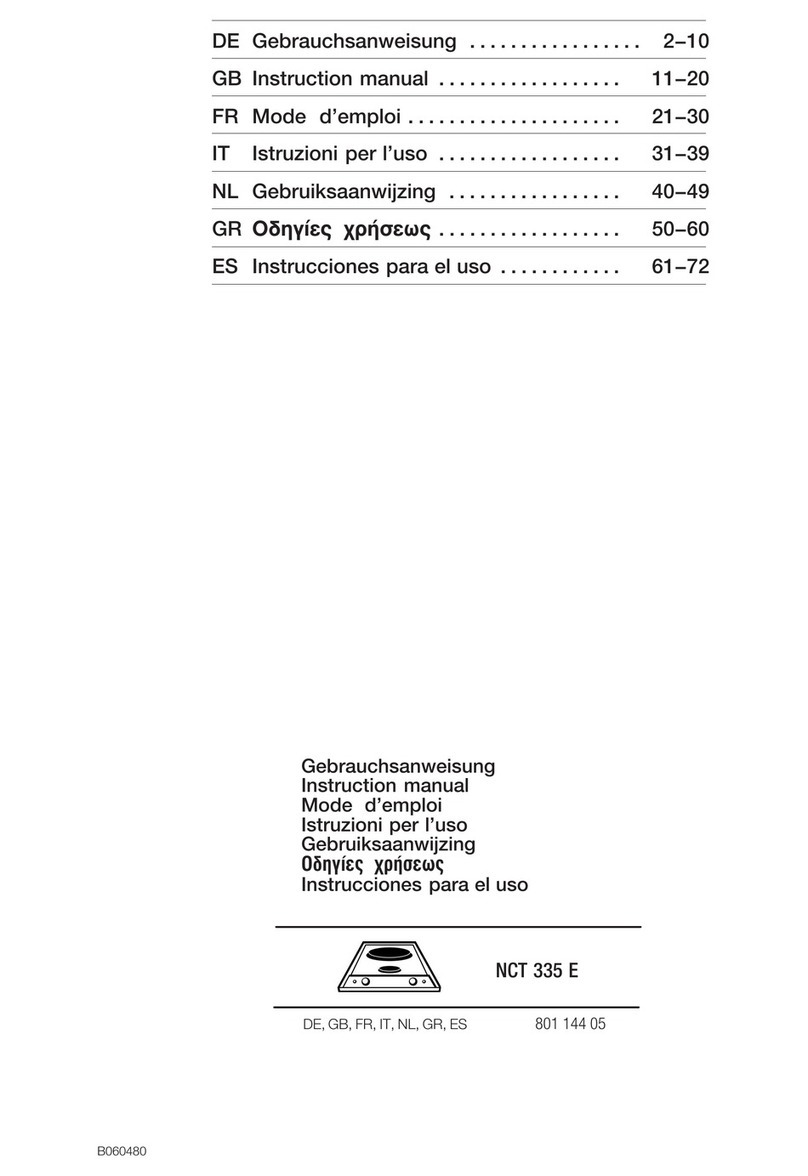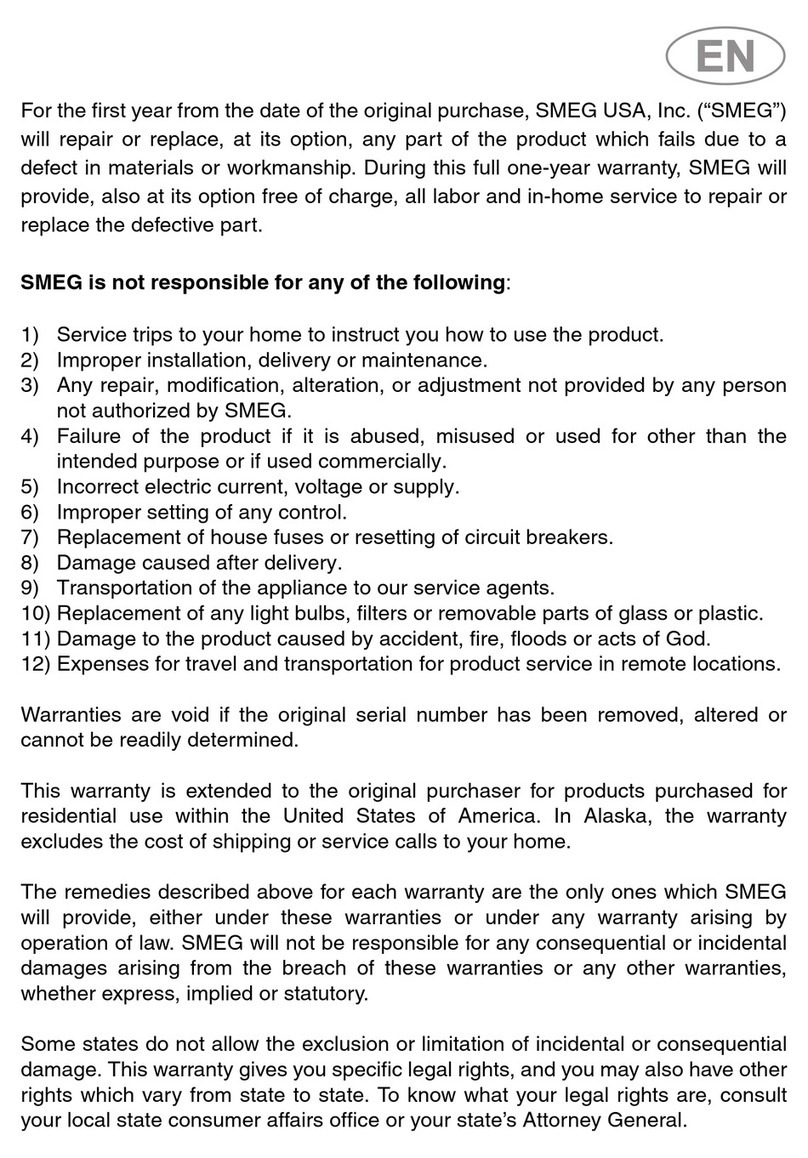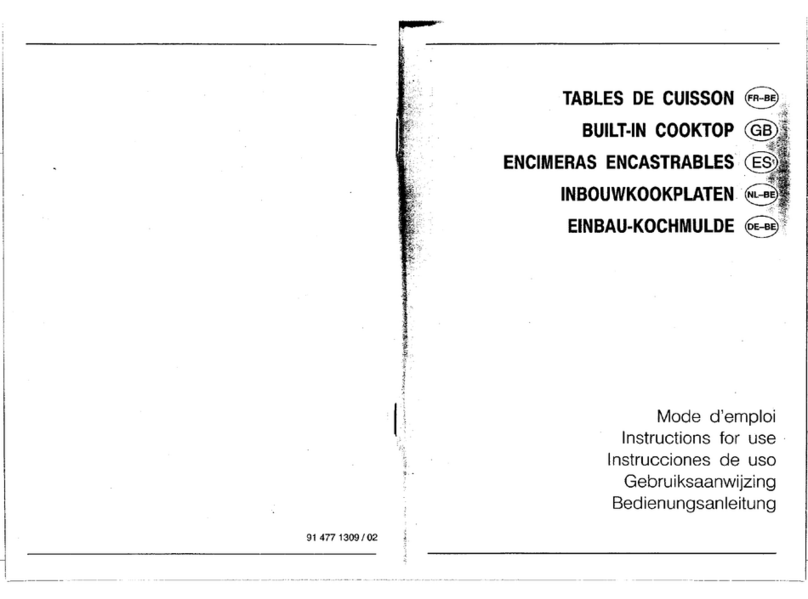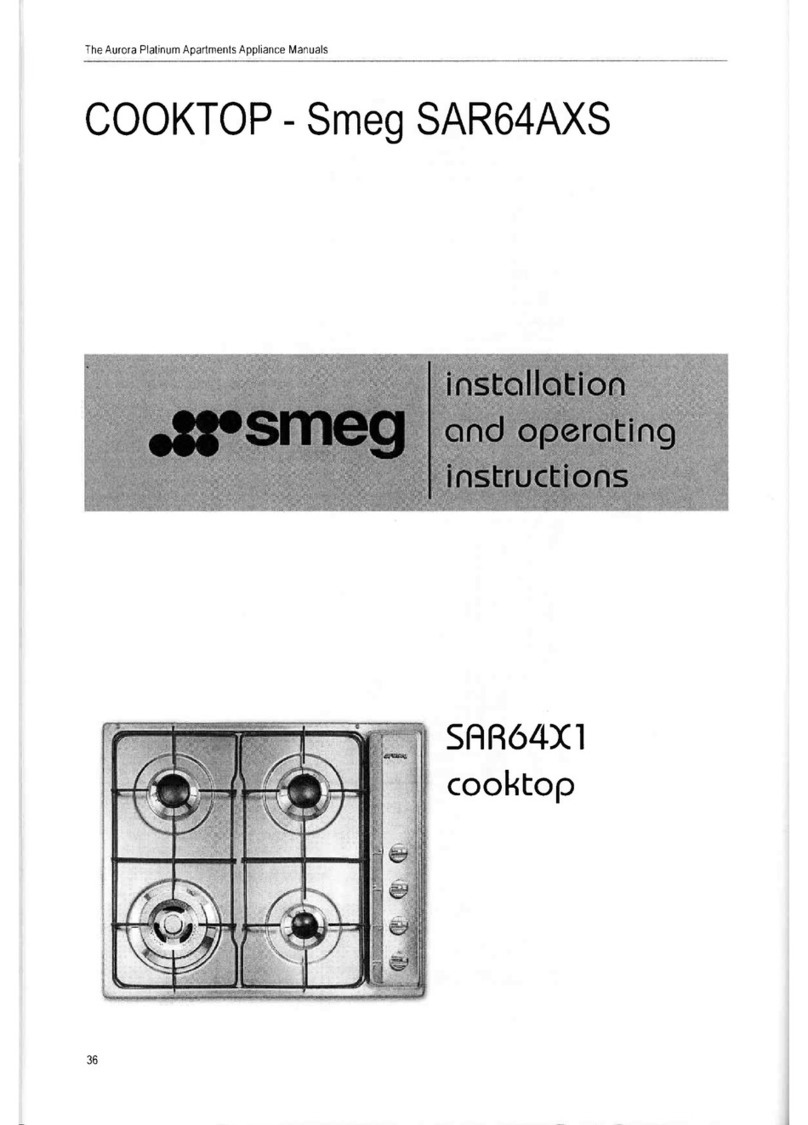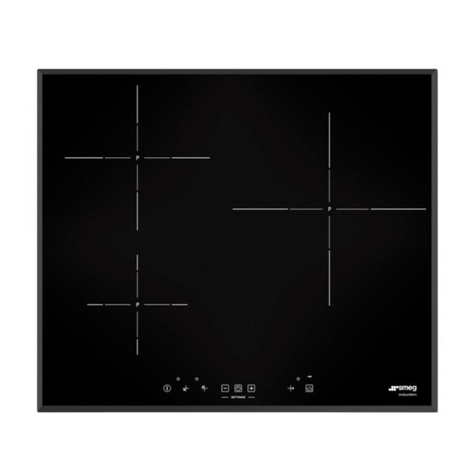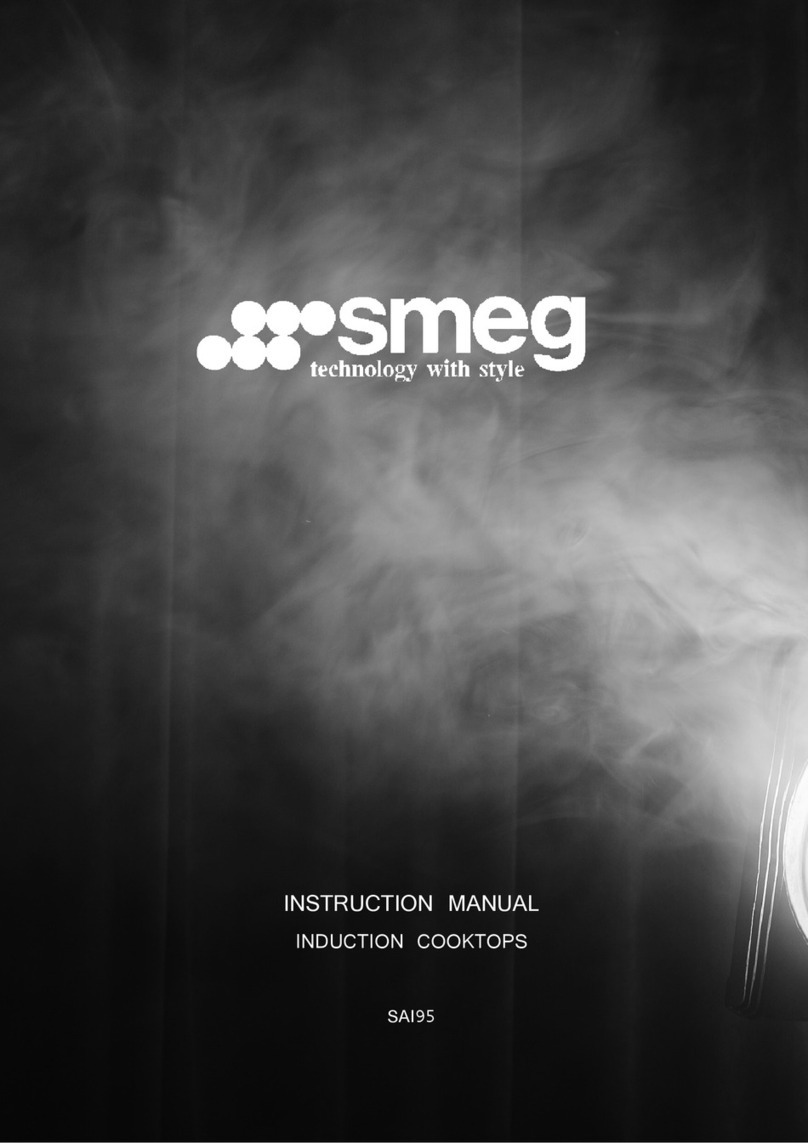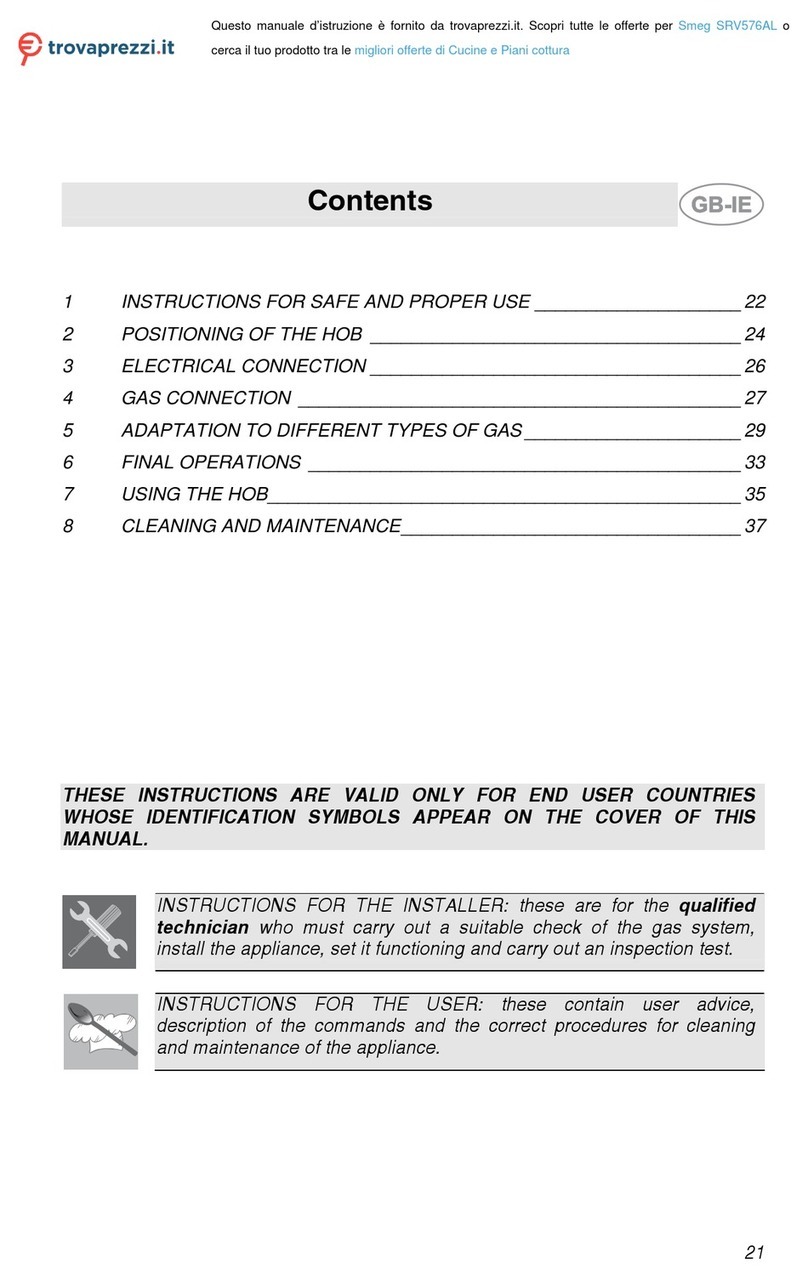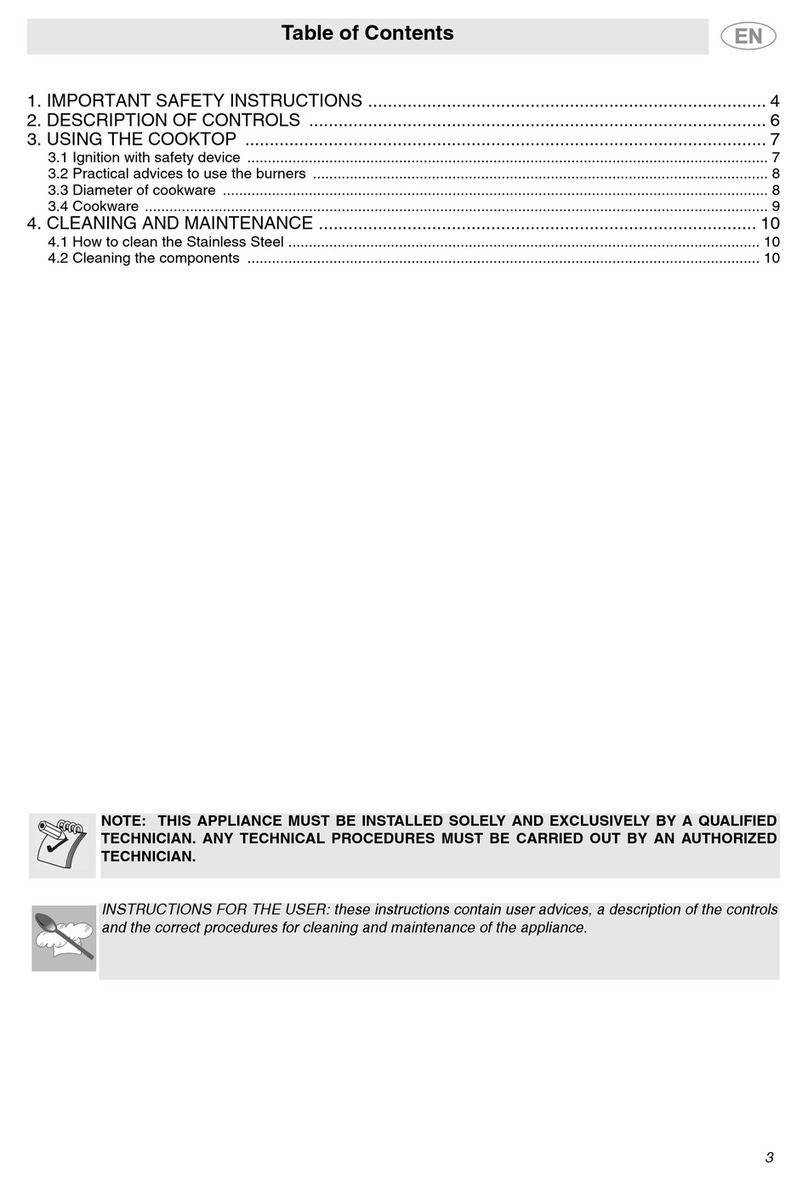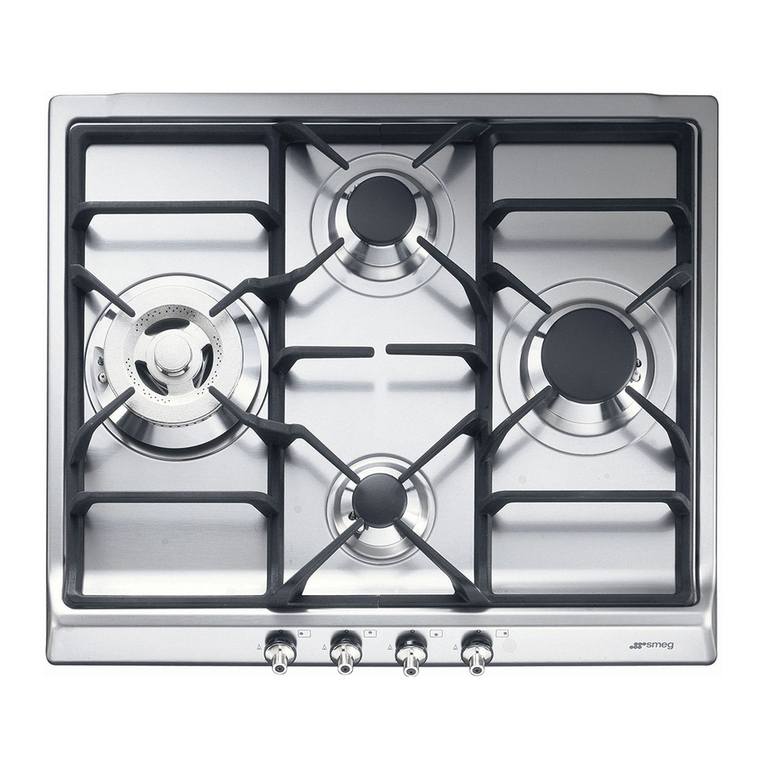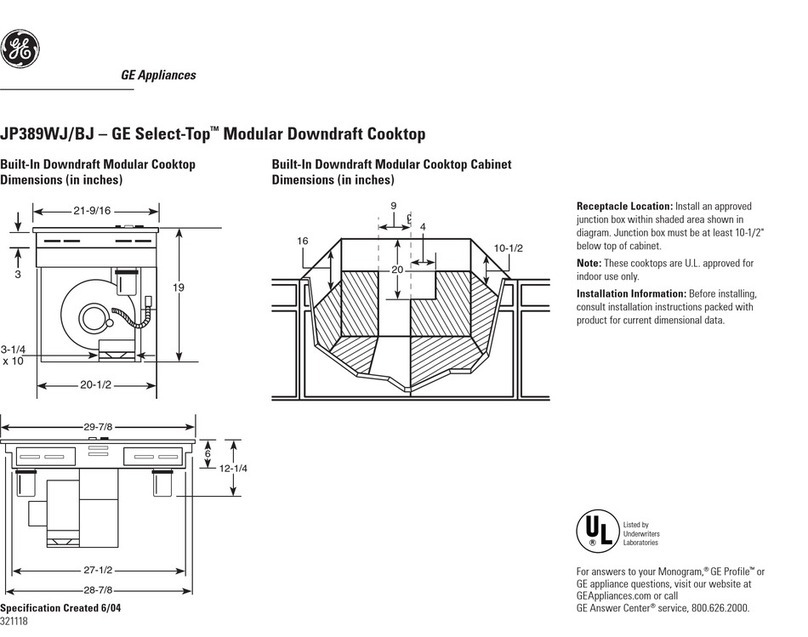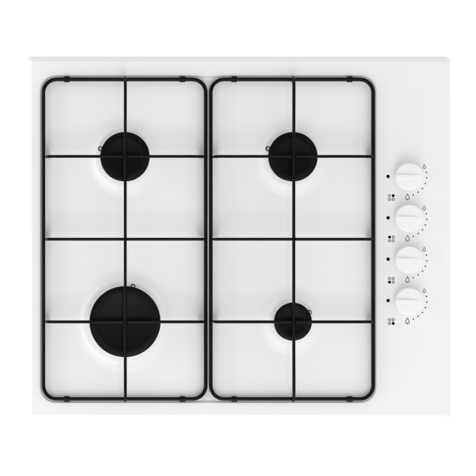Instructions for the installer
6
2. POSITIONING THE COOKTOP
The following operation requires building and/or carpentry work that must
be carried out by a skilled tradesman.
The cooktop may be installed on various materials, such as masonry,
metal, solid wood, plastic laminated wood etc. as long as they are heat
resistant (T = 90°C - 194° F).
Never use silicone or other insulating products when installing the
appliance; only use the rubber gasket provided.
2.1.1 Attachment to the support structure
Create an opening in the top surface
of the counter with the dimensions
shown in the figure, keeping a
minimum distance of 50 mm (2
inches) from the rear edge.
This appliance is classified "type Y"
with regard to risks against fire and
can be positioned adjacent to walls
that are higher than the work
surface, provided that a distance of
145 mm (5.7 in) is respected (as
shown in the figure) in order to
prevent damage due to overheating.
Make sure there is a minimum of 750 mm (30 in) between the burner
flames and any shelf that may be installed directly above them.
Carefully position the insulation gasket (supplied) on the external
perimeter of the hole made in the top surface (see figures below) and try
to make it stick to the entire surface by applying light pressure with your
hands. Refer to the coordinates shown in the figure, keeping in mind that
sides Ashould be adjacent to the hole. Secure the cooktop to the counter
with brackets B(supplied). Carefully trim any excess from border Cof the
gasket. The distances in the following drawing refer to the hole on the
inner side of the gasket.
